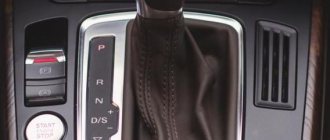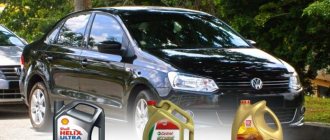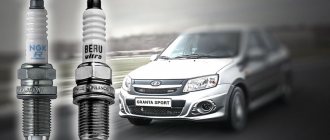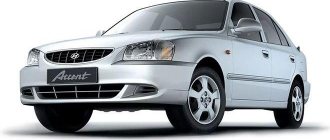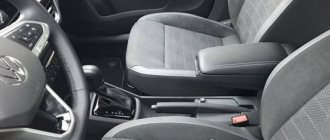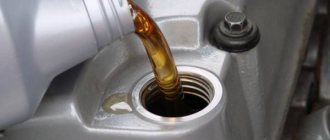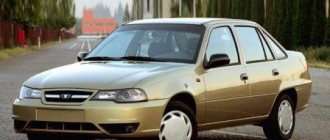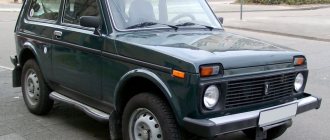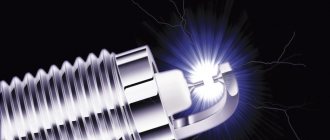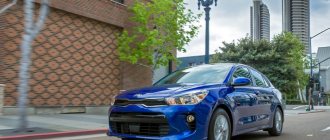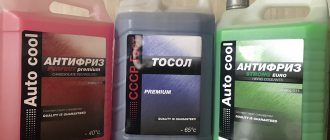The TDI family of engines is a line of diesel power units produced by the German auto giant Volkswagen. Diesel engines, designated by the abbreviation TDI (Turbocharged Direct Injection), are units with a turbocharger and are equipped with a direct fuel injection system. These internal combustion engines can be found on various diesel car models, the manufacturers of which are part of the WAG concern (Audi, Volkswagen, Skoda, etc.)
We also recommend reading the article about what the EGR system is. From this article you will learn about the purpose and operating principles of the exhaust gas recirculation system of a gasoline and diesel engine.
The history of the TDI engine
The diesel engine has always attracted various companies with its untapped potential. The main task set before the engineers was to transform a noisy, low-speed and low-speed unit into a motor that could be easily installed in passenger cars. The result was the creation of a powerful, economical and environmentally friendly diesel engine, which in its performance characteristics was as close as possible to a gasoline power unit.
The pioneer in this direction was the Audi company, which back in 1980 installed a 1.6-liter diesel 54-horsepower engine under the hood of its popular Audi 80 model. Further improvement and development of technology led to the fact that already in 1989 Audi was the first in the world to establish and launched into mass production a compact, high-torque and powerful turbodiesel engine, which received the designation TDI, widely known today.
The first TDI was a 5-cylinder diesel engine, had a displacement of 2.5 liters, and was equipped with a turbocharger with an intercooler (charge air intercooling system). The maximum power of this engine was 120 hp. The torque indicator was at around 256 Nm and was achieved at 2250 rpm.
Since its appearance on the market, this power unit has become quite popular, as it was a worthy alternative not only to diesel engines from other manufacturers, but was also quite capable of competing with gasoline engines. Audi's TDI provided excellent dynamics, while fuel consumption was significantly lower compared to other analogues.
HDI engine
The abbreviation HDI is assigned to motors that are based on Common Rail (developed by Bosch in 1993). The engine itself and HDI technology were developed by the world famous automobile concern PSA Peugeot Citroen. HDI, as I already said, belongs to the line of engines with direct injection, the characteristic differences are reduced fuel consumption by ~15%, reduced noise by ~10 dB, while simultaneously increasing power by as much as ~40%. Motors with the HDI prefix are considered more durable and “tenacious”.
Features and benefits of the TDI engine
After Audi joined WAG, the Volkswagen concern took first place in the list of diesel engine manufacturers. Innovative engineering solutions and proven production technologies provided TDI engines with:
- low noise level during operation;
- high torque;
- low fuel consumption;
- reduction of exhaust gas toxicity;
Today, the TDI diesel engine has a number of advantages compared to its analogues, among which fuel efficiency and efficiency are highlighted. One of the main advantages is deservedly considered to be higher injection pressure compared to the performance of other systems. The injection pressure in TDI engines is at around 2050 bar, while analogues produce only 1350 bar.
In TDI, the injector is combined with a pump, which allows for maximum control over all fuel injection processes. This solution provides the TDI engine with high torque, as well as flexible operation of this diesel engine in different modes. Thanks to this fuel supply system, the combustion process of diesel fuel in TDI engines is more uniform and occurs “delicately,” that is, with minimal shock loads. For this reason, the noise level during diesel operation has significantly decreased, and the content of nitrogen oxide in the exhaust gases has also dropped. In other words, the TDI diesel engine is powerful, quiet, least harmful to the environment and the most economical engine among diesel power units available on the market.
Table 1, 2, decoding of the vehicle identification number of the Volkswagen Touareg 2003-2006
VIN is a code assigned to all cars at the manufacturer since approximately 1980. This is a unique identification number by which you can find out the features of the model, technical specifications and equipment.
The VIN code is indicated in the technical passport of the car.
Typically the 17-digit VIN code for Volkswagen cars looks like this:
Volkswagen Touareg – engine number 3.0 TDI, 3.6 FSI, 4.1 TDI, 4.2 FSI
If the Touareg allows you to get to the VIN number without unnecessary problems, then the engine number, no matter what unit you choose, will definitely blow your mind, even despite the fact that in all of these cases the designation is on the front of the cylinder block.
Let's start with, perhaps, the most common V6 engines. The 3.6-liter FSI petrol power plant (CMTA - 249 hp, CGRA - 280 hp) hid the engine number at the very bottom, flush with the crankshaft pulley, or rather to the right of it (to the right in the direction of travel, of course) . The platform is located vertically:
Close-up on an example of a CMTA unit
The engine number of the V6 3.0 TDI diesel engines with a power of 204 hp (CASD, CJMA) and 245 hp (CRCA, CJGD) was hidden on an inclined platform behind the roller mount, and it was precisely hidden, since without a certain skill it is impossible to get to it. Despite the fact that the marking, as already mentioned, is located on the front, you can inspect it from above by first removing the plastic decorative cover:
It is almost impossible to completely inspect the 3.0 TDI engine number, but most of the symbols can be checked
After modifications in 2011, instead of CASA, only CJMA and CRCA motors were installed. It’s easier to see the number from the front of the engine. You need to take a look at the video:
V8 units are much less common and their engine number is no easier to find. The 4.1 TDI engine (CKDA, 340 hp) is located approximately in the same place as the 3-liter TDI - in front on an inclined platform near the oil filler neck:
The gasoline giant 4.2 FSI (CGNA, 360 hp) does not particularly hide the markings. For full access, you just need to remove the front decorative cover - the number is located on a horizontal platform right in the middle of the front of the central engine block:
Author: Denis Putkov
Volkswagen Touareg 2 – Weaknesses and choice of used car
Vehicle operation and maintenance
1.8. Tables
1.8.3 Table 1.2. Decoding the vehicle identification number
characters 1-3
They mean the worldwide vehicle identification code – WMI, World Manufacturer Identifier. Indicate the type of car (car, truck, van), country and manufacturer.
As can be seen from our example - WVW, a car from Germany, manufacturer Volkswagen, a passenger car.
The country of origin is indicated by symbol 1
W - Germany 1 - USA 3 - Mexico 9 - Brazil X - Russia (Kaluga)
Let's see what some common WMIs for Volkswagen vehicles look like:
WVW - Volkswagen, Germany, cars 1VW - VAG (USA), USA, cars 3VW - Volkswagen de Mexico, cars 9BW - VAG (BRA), Brazil, cars WV2 - Volkswagen, Germany, minibuses and light trucks XW8 - Volkswagen Group (RU), Russia, assembly from SKD kits (Kaluga)
characters 4-6
Free ZZZ symbols mean that the car is produced for the European market. But in cars intended for the American market, the values will be as follows: symbol 4 indicates the engine type, symbol 5 indicates the engine type, symbol 6 indicates the security system.
In our example – ZZZ, that is, the car is intended for the European market.
characters 7-8
These symbols indicate the model range of the car. In our example - 1J, which means Golf IV.
Look at the transcripts:
11 — VW 1200 (Typ 111) / Tipo 1 (Typ 111, 113) / Volkswagen Kaffer/ 12 — up! (Typ 6A1, 6A5) 13 — Scirocco (Typ 137) 13 — Scirocco (Typ 138) 14 — Caddy I (Typ 147, 148, 1AE) 15 — Bora (Typ 152) 15 — Jetta I (Typ 161, 162, 163 , 164) 15 — Golf II (Typ 171,172, 173, 174) 15 — Scirocco (Typ 533, 534) 16 — Golf I Cabrio / Rabbit Convertible (Typ 154, 155) 16 — Golf II (Typ 171, 172, 173, 174) 16 — Golf II (Typ 191, 192, 193, 194) 16 — Golf Syncro (Typ 191, 192, 193, 194) 16 — Golf (Syncro) (Typ 1G1) 16 — Rallye Golf Syncro (Typ 1G4) 16 — Jetta II (Typ 161, 162, 163, 164) 16 — Jetta II (Typ 165, 166, 167, 168) 16 — Jetta / Vento (Typ 162) 16 — Jetta (Typ 163) 16 — Jetta Syncro / Golf GT Syncro (Typ 167, 168) 16 — Jetta (Syncro) (Typ 1G2) 16 — Jetta (Typ AV2) / Jetta (Typ AY2, AY3) / Jetta (Typ AV3) 16 — Scirocco (Typ 533, 534) 16 — New Beetle (Typ 5C1) / New Beetle Cabriolet (5C7) 17 - Golf I Cabrio / Rabbit Convertible (Typ 154, 155) 17 - Golf II / Rabbit (Typ 177, 178, 179) 17 - Golf II (Typ 171, 172, 173, 174) 17 — Golf II (Typ 176) 17 — Golf (Typ 174, 176) 17 — Jetta II (Typ 161, 162, 163, 164) 17 — Jetta II (Typ 167) 17 — Rabbit (Typ 175) 17 — Caddy (Typ 170) 17 — Scirocco (Typ 533, 534) 18 — Iltis (Typ 183) 18 — Lavida (Typ 181, 182, 183) 19 — Jetta II (Typ 165, 166, 167, 168) 19 — Golf II (Typ 191, 192, 193, 194) 19 — Golf II (1983…1992), Jetta II (1984…1991) 19 — Golf (Syncro) (Typ 1G1) 16 — Rallye Golf Syncro (Typ 1G4) 19 — Jetta (Syncro) (Typ 1G2) 1B - Tipo 1 (Typ 111, 113) /Volkswagen Kaffer/ 1C - New Beetle (Typ 1C1, 1C9, 9C1, 9G1) 1E - Golf III Cabrio (1993...1998) 1F - EOS ( Typ 1F7, 1F8) 1G - Golf II, Jetta II 1H - Golf III (1991...1997), Vento, Golf III Variant (1993...1999) 1J - Golf IV (1997...2003), Bora, Golf IV Variant (1999... 2007), Golf IV Cabrio (1998...) 1K - Golf V (2003...2009), Golf Plus (2004...), Golf V Variant (2007...2010) 1L - XL-1 (2015) 1T - Touran (2003...2016 ) 1V — Golf Cabrio 1W — Golf, Jetta, Vento 1Y — New Beetle Convertible (2003…2010) 21 — LT 24 — Transporter (flatbed) 25 — Transporter / Multivan / California T3 (bus, van, combi) (1980…1992 ) 28 - LT 2A - Transporter Syncro 2C - Caddy III (2010...2015) 2D - LT (1996...2006) 2E - Crafter 2F - Crafter (2006...) 2H - Amarok (2011...) 2K - Caddy II (2004...2010 ) 2V - L80 31 - Passat B3 (1988...1993) 32 - Passat B2 (1980...1988) 32 - Passat B1 (...1980) 33 - Passat B1 (...1980) 35 - Passat CC (2008...2013) 36 - Passat B7 (2010...2015) 3A - Passat B4 1994...1996) 3B - Passat B5 (1996...2005) 3C - Passat B6 (2005...2010) 3C - Passat B7 (2010...2015) 3C - Passat B8 (2015...) 3D — Phaeton (2002…2016) 3G — Passat B8 (2015…) 3H — Arteon (2017…) 50 — Corrado 53 — Scirocco 5C — New Beetle II / Cabrio (2012…) 5K — Golf VI (2009…2013) 5M — Golf Plus (2009...2014) 5N - Tiguan (2007...2016) 5T - Touran II (2016...) 5U - Gol (2008...) 5Z - Fox (2004...) 5Z - Suran/Spacebox (2011...2014) 60 - Ameo / Polo (sedan with a short trunk made in India) 61 - Polo Sedan (2011...) 6C - Polo V (2015...) 6E - Lupo 3L TDI 6K - Polo III Classic (1995...2000)/ Variant (1997...2000) 6N - Polo III (1994...2000) 6S - Polo Vivo (Classic) (2015...) 6R - Polo V (2009...2014) 6V - Polo Classic / Variant 6X - Lupo 70 - Transporter / Caravelle / Multivan T4 (1991...1996) 7A - Taro (1989...1997) 7D - Transporter / Caravelle / Multivan T4 (1996...2003) 7E - Transporter / Multivan / Caravelle / California T5 (2010...2015) 7H - Transporter / Multivan / Caravelle / California T5 (2003...2009) 7L - Touareg (2002...2010) 7M - Sharan I (1995...2010) 7N - Sharan II (2010...) 7P - Touareg II (2010...) 80 - Polo (1990-1994) 82 - Polo Coupe 86 - Polo I/ II (...1994) 87 - Polo Classic/Coupe 9C - New Beetle Europa (1999...2002) 9K - Caddy 9M - Jetta 9N - Polo IV (1999...2010) 9U - Caddy A1 - T-Roc A7 - Polo (sedan with short trunk made in India for South America) AA - up! AD - Tiguan II (2016...) AM - Golf Sportsvan (2015...) AU - Golf VII (typ 5g) BR - Gran Santana (2012...) CA - Atlas SA - Caddy IV (2016...) SG - Transporter / Multivan / Caravelle / California T6 (2015…)
Reliability of diesel TDIs
The installation of turbocharging allowed the diesel engine to develop more power, and the diesel efficiency also increased. As for TDI engines, these engines are quite reliable if used correctly. The health of these internal combustion engines is most strongly influenced by the quality of the fuel and timely maintenance. With proper care, the engine itself can even turn out to be a “millionaire”.
The weak point of TDI is the injectors and turbocharger. The service life of the injectors directly depends on the quality of the diesel fuel and the general condition of the TDI diesel power system. The service life of the turbine can vary, the average resource is 120-160 thousand km.
CDI engine
The motor with the CDI nameplate is a Mercedes development, which is based on the same Common Rail technology as the above power units. Engines of the CDI line are more demanding in terms of fuel quality (often the fuel pump, injectors, etc. “compost the brains”), while they are very economical and dynamic on the road.
Well, that's all. I hope I clearly explained the difference between HDI, TDI, SDI, and CDI , now you can easily navigate and choose the engine that is suitable for your type and class. Thank you for your attention and see you again at Question Auto.
Fuel injection in TDI engines
In the early stages of the development of diesel internal combustion engines, the pressure in the system, which involves the presence of a fuel injection pump in conjunction with simple mechanical injectors, was only 20-40 bar. A modern diesel engine has a minimum pressure of 1600 Bar and higher. The tendency to increase fuel injection pressure is due to the fact that diesel engines have a very short time allotted for the mixture formation process.
If the crankshaft rotates at 2000 rpm, then only 3-4 milliseconds are allocated to mix a portion of diesel fuel with air. Increasing the crankshaft speed further shortens this time period. Also, the preparation of a homogeneous fuel-air mixture becomes possible only by increasing the injection pressure. In the case of low pressure, the fuel mixture will be of poor quality, and the combustion process will be low efficient. The result is increased toxicity of diesel exhaust and low efficiency.
Previously, the fuel injection pump on diesel engines was responsible for fuel injection, which works in tandem with mechanical injectors; today, common rail systems are installed on diesel engines. Since the combustion process in a diesel engine is an explosion from the contact of a portion of diesel fuel with air heated during the compression stroke, the injection time is very limited.
The fuel injection pump in a modern diesel engine simply creates pressure in the common line, and TDI piezo injectors (piezoelectric injectors) are capable of injecting a clearly defined amount of diesel fuel into the cylinders of a diesel engine in a very short period of time (less than 0.2 milliseconds) at the command of the ECU.
Also in some designs of diesel internal combustion engine power systems you can find so-called pump injectors. This means that each injection nozzle is equipped with its own high pressure pump. It turns out that the development of diesel technology today comes down to increasing injection pressure and maximum efficiency of the turbocharging system. This way it is possible to solve the main problems: increase power and reduce the level of exhaust gas toxicity.
SDI engine
SDI. Saugdieseldirekteinspritzung.
The brand name (derived from "suction diesel injection" or "suction direct injection diesel" was adopted to differentiate between earlier and less efficient indirect injection engines, called
SD
or "suction diesel" (
Saugdiesel
), which were also produced by Volkswagen Group.
SDI class motors are distinguished by their long life and simplicity of design. Long mileage is not a problem for SDI, the motors are very durable and reliable, but if repairs are still required, the cost is unlikely to please you.
TDI turbocharging: variable geometry turbine
Not only dynamics, but also efficiency and environmental friendliness largely depend on the efficiency of the TDI turbocharger. Correct air pressure must be realized over as wide a range as possible. For this reason, TDI engines are equipped with a turbocharger with variable turbine geometry.
The leading turbine manufacturers in the world use the following names:
- VGT turbine (from the English Variable Geometry Turbocharger, which means turbocharger with variable geometry). Produced by BorgWarner.
- Turbocharger for diesel VNT (from the English Variable Nozzle Turbine, which means a turbine with a variable nozzle). This name is used by Garrett.
A variable geometry turbocharger differs from a conventional turbine in that it has the ability to adjust both the direction and magnitude of the exhaust gas flow. This feature allows you to achieve the most suitable turbine speed in relation to a specific operating mode of the internal combustion engine. In this case, the compressor performance increases greatly.
For example, the VNT turbine is based on special guide vanes. Additionally, there is a control mechanism, and the presence of a vacuum drive is also noted. These turbine blades rotate at the required angle around their axis, thereby being able to change the speed and direction of the exhaust flow. This occurs due to a change in the cross-sectional area of the channel.
The control mechanism is responsible for rotating the blades. Structurally, the mechanism has a ring and a lever. The lever is influenced by a vacuum drive, which controls the operation of the mechanism through a special rod. The vacuum drive is controlled by a separate valve that limits the boost pressure. The valve is an integral element of the electronic engine control system and is activated depending on the boost pressure. This value is measured by separate sensors:
- a temperature sensor that measures the intake air temperature;
- boost pressure sensor;
In other words, the turbocharging on the TDI works so that the charge air pressure is always optimal at different engine speeds. In fact, the turbine doses the energy of the exhaust gas flow.
- As is known, at low engine speeds the exhaust flow rate (energy) is quite low. In this mode, the guide vanes are usually closed, thereby achieving a minimum cross-section in the channel. As a result of passing through such a channel, even a small amount of gases spins the turbine more efficiently, causing the compressor wheel to rotate noticeably faster. It turns out that the turbocharger provides greater performance at low speeds.
- If the driver sharply presses the gas, then the effect of the so-called “turbo lag” occurs in a conventional turbine. Turbo lag should be understood as a delayed response to pressing the gas pedal, that is, not an immediate increase in power, but a pick-up after a short pause. This feature is due to the inertia of the turbocharging system, as a result of which the gas flow is insufficient at the moment of a sharp increase in crankshaft speed. In turbines with variable geometry, the guide vanes rotate with a certain delay, which allows you to maintain the required boost pressure and practically get rid of turbo lag.
- When driving at high and close to maximum engine speeds, the exhaust gases have maximum energy. To prevent the creation of excess boost pressure, the blades in variable geometry turbines are rotated so that a powerful flow of gases moves through a wide channel with the largest cross section.
We also recommend reading the article about the service life of diesel turbines. From this article you will learn about the service life of this unit in comparison with gasoline analogues, and will also get the opportunity to familiarize yourself with the basic tips and recommendations for increasing the service life of a diesel engine turbine.
The relatively short service life of the turbocharger is due to the fact that only variable geometry turbines are installed on the TDI. During engine operation, the turbocharger spins up to 200 thousand rpm and constantly interacts with the flow of exhaust gases heated to 1000 degrees Celsius. Such thermal and mechanical loads, as well as the individual design features of these turbines, relatively quickly lead to the need to repair or replace the turbocharger.
